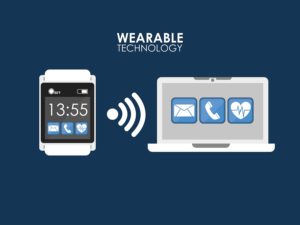
I’m not a fan of wearable technology. I carry a cell phone and that’s it. When Samsung came out with its Galaxy Gear Smartwatch, I scoffed and was certain it’d come and go with the likes of the Apple Newton and Sony Betamax. Apparently, I was wrong. If the plethora of wearable technologies on display at this year’s CES is any indication, wearable technology is here to stay and is only getting more elaborate. Though the smartwatch is not my favorite, wearable technology comes in many other forms such as Google Glass, Bluetooth Rings, and the Fitbit.
Since wearable technology isn’t going away any time soon, the obvious question now is “how can advertisers take advantage is this?”
Some companies are already making great strides. For example, Hipcricket, a mobile network, announced that its AD LIFE platform now supports website rendering and text messaging technology across wearable technology, such as Google Glass. This will definitely help B2C clients reach their customers (ideally in real-time) and drive them to retail outlets or online sites. Additionally, I think AdRoll has an interesting solution with their EyeRoll Platform. The platform leverages proprietary facial response technology to detect, in real time, a user’s interest level in whatever it is they are looking at. Then, they are able to send the user an ad directly into their Google Glass.
What about B2B clients where the buying cycle isn’t quite as fast? If I’m a technology company, I’m not going to find too many Google Glass wearers staring at networking infrastructures any time soon. Can I serve them a banner ad if I notice them reading a print article on “networking infrastructure” (assuming they read print publications with these contraptions on their face)? Nonetheless, B2B advertisers have a few more hurdles to overcome.
Unfortunately, the marketing any client can do to these devices is currently limited. Most wearable technology requires some type of software download to accompany them which is where data is stored, processed, analyzed, etc. At this point in time, the communication between customer and advertiser is pretty much a one-way street. There’s a lot of data coming from these devices, but not a lot of data going to them. The opportunities to show ads and marketing messages at scale are extremely limited. Also, the data captured by these wearable devices can be personal. There will inevitably be a fine line marketers must straddle when it comes to the usage (read: manipulation) of this data.
As a media strategist, I’m excited about the data potential of these devices. What we can do with that data from an advertising standpoint can, eventually, be just as exciting. I look forward to the days when we can show a user a targeted ad online, then help build frequency by retargeting that person on his/her wearable device. Or, if someone searches something via their Google Glass, we can then hit them with a relevant display ad (or, better yet, some really good content) on their desktop. How cool would that be?? I don’t think we’re that far off. As a consumer, the amount of data captured by so many devices is pretty scary. However, as an advertiser, I say the consumer can run but they can’t hide (cue maniacal laugh!). ☺
Dale Viger
Just Media, Inc.
Source: http://www.fiercecmo.com/special-reports/wearables-next-b2b-marketing-frontier
